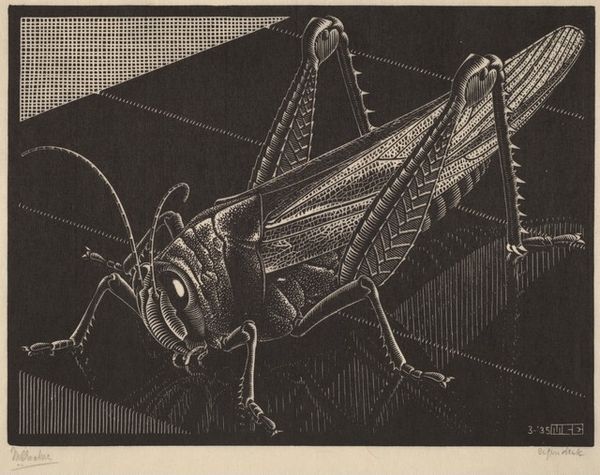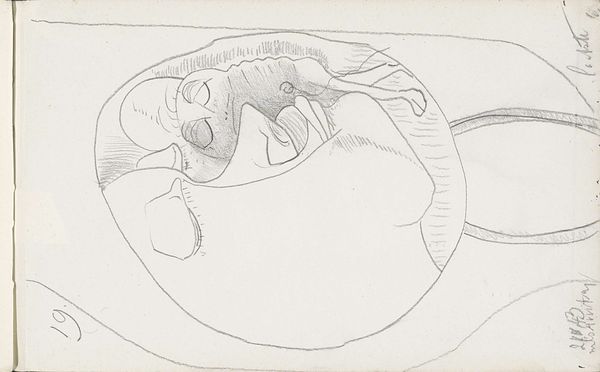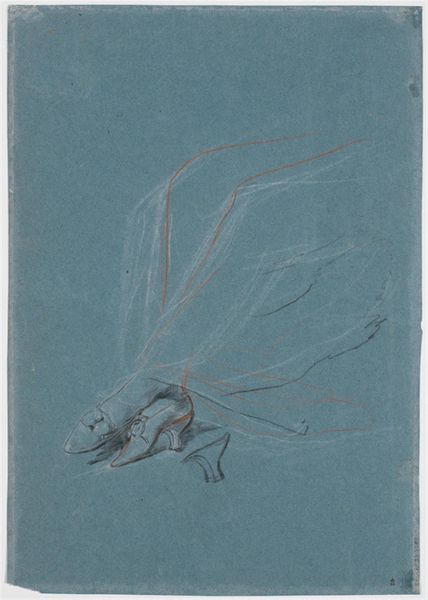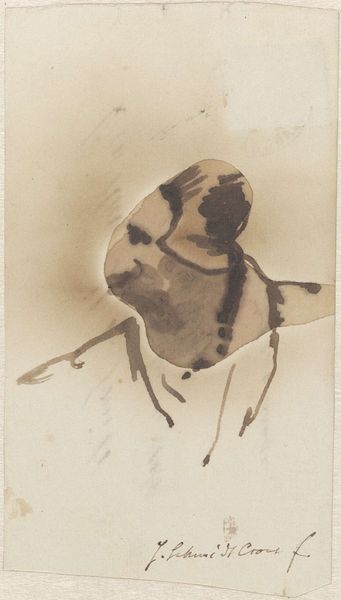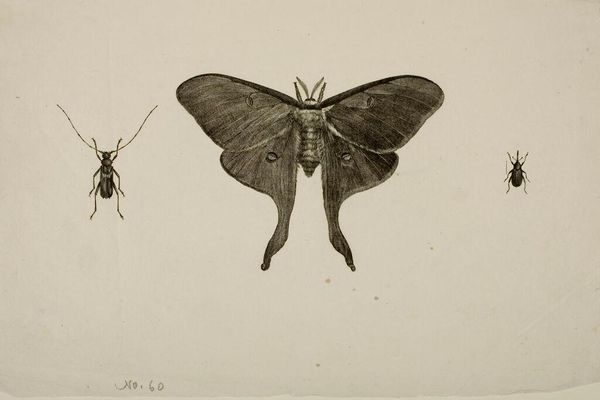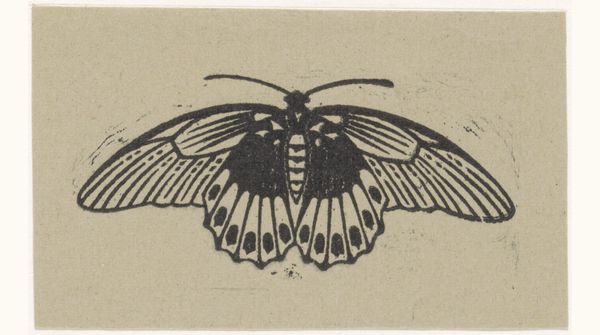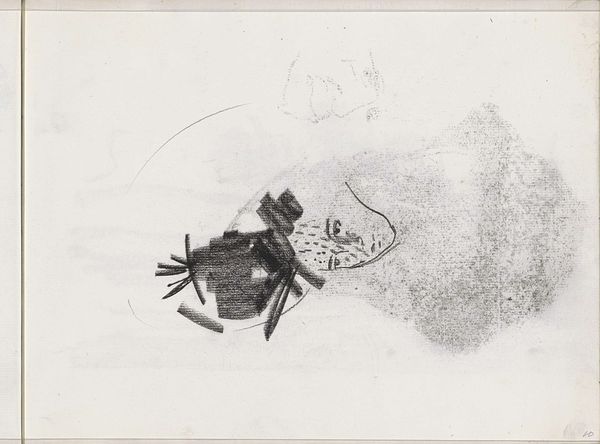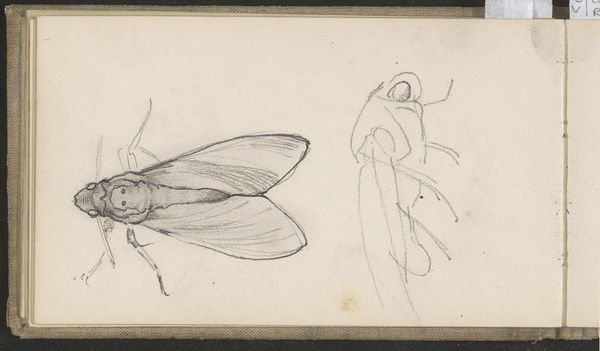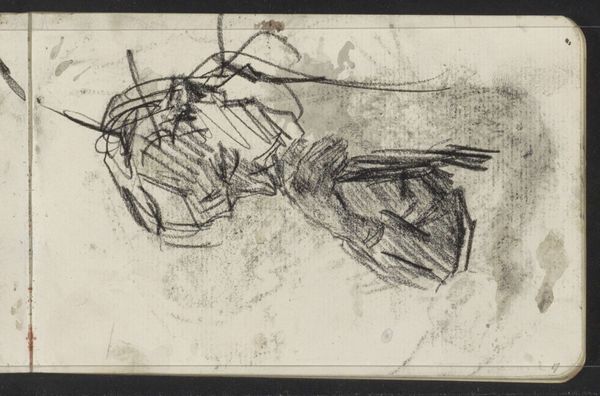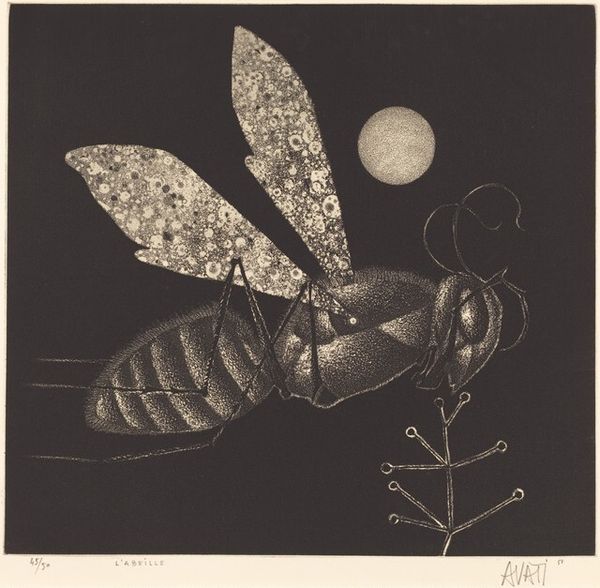
Sprinkhaan, vermoedelijk studiemateriaal van leerlingen van Schule Schloss Salem c. 1929
0:00
0:00
drawing, pencil, graphite
#
drawing
#
pencil sketch
#
pencil
#
graphite
#
sketchbook drawing
#
pencil work
#
realism
Dimensions: height 87 mm, width 117 mm
Copyright: Rijks Museum: Open Domain
Editor: Here we have an anonymous drawing from around 1929, entitled “Sprinkhaan, vermoedelijk studiemateriaal van leerlingen van Schule Schloss Salem” – that's "Grasshopper, probably study material of students of Schule Schloss Salem". It’s rendered in pencil and graphite. What strikes me is how still and formal the drawing feels, despite depicting a living insect. What can you tell me about it? Curator: The fact that this was likely student work produced at Schule Schloss Salem is fascinating. Salem was a boarding school founded on progressive educational principles after World War I. It aimed to cultivate responsible citizens, and art played a role in developing observation and precision. The choice of a common insect isn't accidental; it's about finding value and detail in the everyday. Editor: So, it’s not just a grasshopper. It represents something more about the school’s philosophy? Curator: Exactly. The emphasis on realism suggests a focus on empirical observation – learning by carefully studying the natural world. What kind of values do you imagine were at play in the decision to use this type of drawing within their curriculum? Editor: Perhaps a belief in the power of direct experience and detailed study. Getting students to really *see* what's around them. Curator: Precisely. Consider how this meticulous style contrasts with more abstract or expressive movements emerging at the same time. The school’s commitment was towards cultivating observation. Were they training artists or citizens? Editor: Probably a little of both, although it does seem to emphasize skill and precision over personal expression. Curator: It prompts us to think about the function of art education. It certainly makes me consider the varying aims educational institutions had on art production, and the effect they would later have on the role those individuals would serve within society. Thanks for walking me through that piece, it was revealing to delve deeper into that seemingly mundane image.
Comments
No comments
Be the first to comment and join the conversation on the ultimate creative platform.
